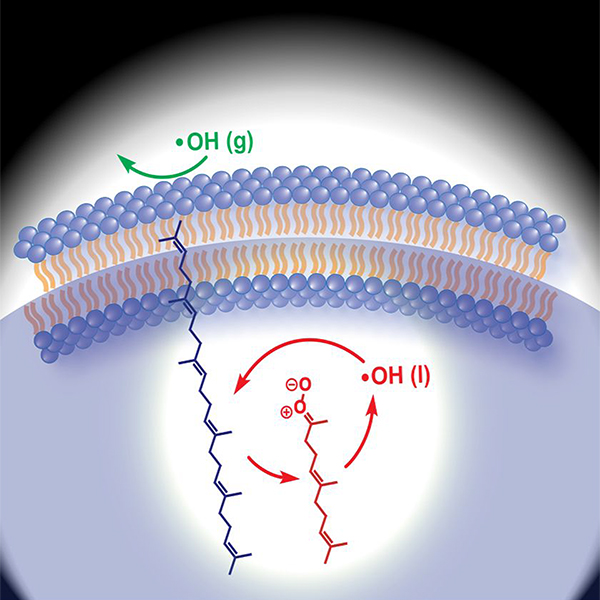Scientists have made a surprising discovery that could help explain our risk for developing chronic diseases or cancers as we get older, as well as how food decomposes over time.
Our bodies—and many foods—contain unsaturated lipids, important building blocks for cell walls. As we age, decades of exposure to hydroxyl radicals (OH) and other reactive oxygen species debilitate our body’s unsaturated lipids. Such irreversible damage increases the likelihood of developing cancer and age-related chronic conditions such as Alzheimer’s disease.
At Beamline 9.0.2, researchers employed mass spectrometry to illuminate lipid nanodroplets under ultraviolet light. The results unexpectedly showed that hydroxyl radicals cause damage to cells via the formation of Criegee intermediates: molecules first proposed in 1975 to explain how pollutants emitted by cars and factories react with the ozone layer in our atmosphere.
The results provide evidence of a new lipid degradation pathway where lipid-hungry hydroxyl generates Criegee intermediates, which then give birth to a new batch of hydroxyl, and so on.
Since chronic diseases, cancer, and food spoilage have been linked to cell damage caused by hydroxyl radicals, the researchers believe that Criegee intermediates could play a role in the molecular degradation that makes us vulnerable to diseases as we age, and that causes food to decay.
The researchers hope that the results from this study will inspire further exploration of the biochemistry of Criegee intermediates, lipids, and antioxidants, which could help people in a number of ways, from the prevention of disease to the preservation of food.

M. Zeng, N. Heine, and K.R. Wilson, “Evidence that Criegee Intermediates Drive Autoxidation in Unsaturated Lipids,” PNAS 117, 4486 (2020), doi: 10.1073/pnas.1920765117.
Adapted from the Berkeley Lab news release, “Scientists Discover New Clue Behind Age-Related Diseases and Food Spoilage.”